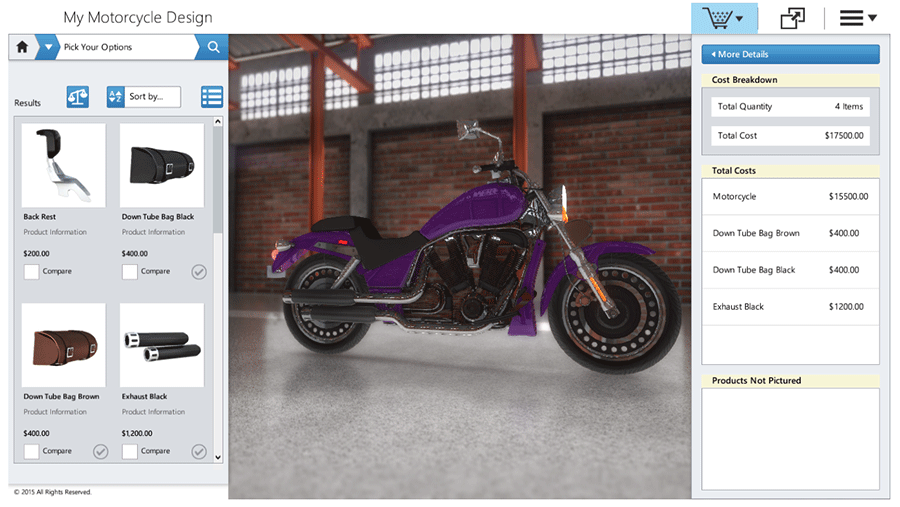 Thirty-six percent of today’s customers want personalized products and 71% of them are willing to pay more for personalization, according to a report by Deloitte.
Thirty-six percent of today’s customers want personalized products and 71% of them are willing to pay more for personalization, according to a report by Deloitte.
To keep up with the demand for personalized products, loads of businesses are turning to 2D or 3D product configurators to create a better and more visual buying experience for their customers—as well as maximize efficiency and sales potential.
But one thing we’re often asked by our clients is "How to choose between a 2D and 3D product configurator?"
With over 15 years of experience in developing configure-price-quote (CPQ) software, we’re here to show you the differences between 2D and 3D configurators and empower you to make the right decision for your business.
The Mutual Benefits of Visual Product Configurators
The foundations for 2D and 3D product configurators are largely the same and share several business benefits:
- Real-time rendering. Customers see 2D or 3D visual renderings of their order while they build it. When customers are able to see exactly what they are purchasing, their confidence levels rise and cart abandonment is reduced.
- Rule-based configuration. Based on the rules you set, customers can’t create orders you’re unable to manufacture, eliminating the possibility of customers submitting an order you’re unable to fulfill.
- Real-time pricing with faster, more accurate price quotes. As customers design their order, the shopping cart automatically updates in real-time. Automating the CPQ process frees up sales reps and allows customers to quickly make informed decisions.
- Detailed analytics. Product configurator software tracks customers throughout the configuration process and provides insight into their behavior. With this data, you have the information you need to optimize the buying experience.
- Simple, intuitive ordering experience. Both product configurators streamline the buying process, providing an intuitive and user-friendly sales ecosystem that benefits your sales reps and clients.
See how a diverse range of industries can use product configurators to boost customer service, help streamline the sales process and help close sales more quickly.
Perks of a 2D Product Configurator
The primary difference that separates visual product configurators is that 2D product configurators use only two dimensions. But before you start thinking that three is better than two, consider these benefits:
- Faster rendering speed. Two-dimensional images have smaller file sizes than their 3D counterparts. This speeds up visual previews, providing customers with a seamless user experience.
- Light on design. With only two dimensions to design for, 2D configurators are less complex to create artwork for. If you don’t already have 3D models of your products, or the design resources necessary to produce them, a 2D product configurator costs less in terms of designer time and expense.
Advantages of a 3D Product Configurator
With an additional dimension, 3D product configurators give customers an enhanced look at their customized products. Showing products in 3D has a few benefits on your business:
- Takes advantage of 3D renderings. If you already have existing 3D models of your products, or an in-house design team to produce them, a 3D product configurator is a natural fit. Equipped with 3D artwork, getting your configurator up and running is more simple than it sounds.
- Visible from any angle. The three dimensions allow customers to view their orders from all angles, ensuring the product meets their needs. This also helps customers visualize the size and shape of their products.
- Provides customers with a wow factor. A 3D product configurator brings your products to life, impressing customers with beautiful and accurate renderings. The third dimension also provides customers with more visual information, minimizing any apprehension they may have.
- Sets you apart from the competition. While product configurators are becoming an increasingly utilized tool for many companies, 3D visuals aren’t as common. The wow factor they can bring and the enhanced user experience can help you get a leg up on the competition.
Take a Look for Yourself
Provide your customers with a better buying experience, regardless of the product configurator you choose. To learn more about each configurator, visit our 2D product configurator page and our 3D product configurator page.
Ready to see a product configurator in action? Take a look at our Powertrak 2D/3D Visual Product Configurator demo.